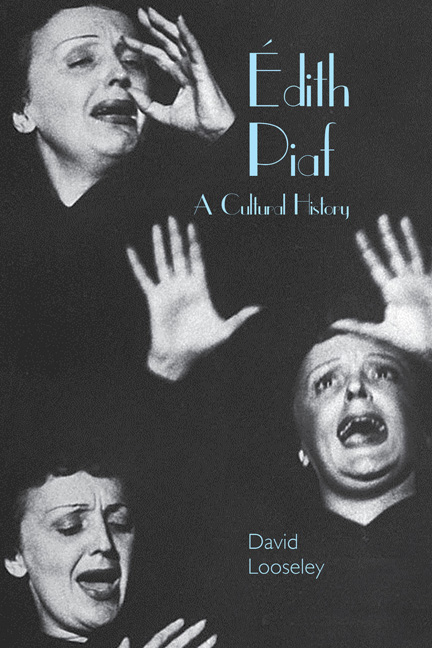Conclusion
Summary
I began this book by suggesting the improbability of our ever knowing who the ‘real’, private Piaf was, since any apparent truths about her beyond a handful of factual certainties are part and parcel of an imagined, narrated Piaf. My overarching assumption has also been that, although she was undoubtedly a great singer and performer, this alone can't explain the singular place the public Piaf has retained in French and global memory, a whole century after her birth. Hence the need for a cultural history, investigating what this public, imagined Piaf has come to mean in the course of that century.
One thread running through the book has been that what we today understand by Édith Piaf was an invention from the start. While acquaintances have busied themselves trying to reveal the Piaf they thought they knew, and biographers a real Piaf hidden from view, both have largely passed over her importance as a cultural artefact generated by both production and reception. This artefact was methodically produced and placed in circulation in the second half of the 1930s. Once out there, it was refined or re-invented for the rest of her life, a production process she increasingly took charge of. So, if there is a real Piaf, it's perhaps Piaf narrator of the self, ‘controller of [her] own mise-en-scène’. Her publics, meanwhile, at home and abroad, appropriated and re-imagined this production in their own terms and for their own purposes, lending it unforeseen meanings and uses. At home, she became a national symbol of romance, class, gender, identity, decadence or renewal, popular culture and the human condition. Internationally, too, she meant all of these things but refracted through an outsider's perception of chanson, France and Frenchness. Since her death, she has been further re-imagined for over half a century, in a suite of afterlives. These later meanings have never eradicated the earlier ones. Beneath the broken star or the patrimonial icon, the frail Parisian waif is still visible. Piaf today, then, is a complex palimpsest of narratives, beneath which the original is unrecoverable.
A second concern has been to show that the imagined trajectory of her life is structured like a tragedy. It begins with her meteoric rise from nothing between 1935 and 1945 and culminates in national and international apotheosis from 1945 to the early 1950s. This is followed by irresistible decline and death.
- Type
- Chapter
- Information
- Édith PiafA Cultural History, pp. 185 - 192Publisher: Liverpool University PressPrint publication year: 2015

